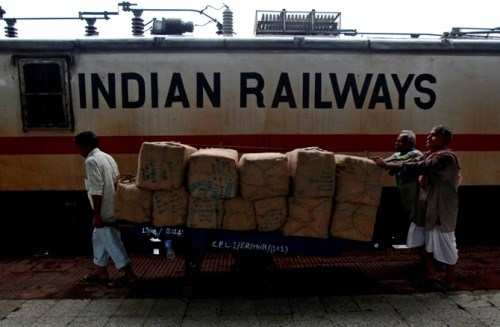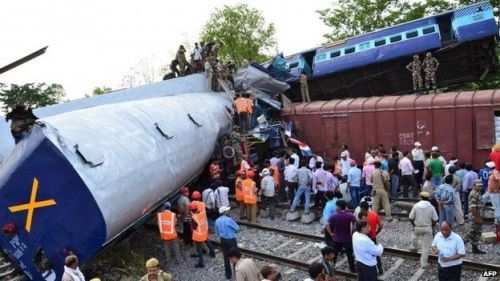Indian Railways – a need to infuse capital investment
Railways have been cheapest, safest and comfortable mode of travel and one may always prefer the same over other mode of travel. The railways also fulfills social obligations and provide concessions to freedom fighters, gallantry award winners, senior citizen, patients suffering from particular illness, quarterly/monthly season pass etc

Railways have been cheapest, safest and comfortable mode of travel and one may always prefer the same over other mode of travel. The railways also fulfills social obligations and provide concessions to freedom fighters, gallantry award winners, senior citizen, patients suffering from particular illness, quarterly/monthly season pass etc.
The railways has many types of trains to cater the needs of people from different walks of society, they are like passenger trains, fast passengers, DEMU, MEMU, mail/express, superfast, Rajdhani, Rajya-Rani, Shatabadi, Garib Rath, sub-urban, vivek and many more. Undisputedly, the railway has been most comfortable and safe mode of travel and it enjoys the preference over others at all times.
Post-independence and over the years the burden of Indian Railway has increased manifold, with the increase in population the available railway resources could not met with the requirement of passengers. Thus there has been big gap between actual requirement and facilities available at source. This resulted into big waiting lists in most of sections of Indian Railway.
In every budget certain new trains have been introduced but the no much progress could be made as far as laying of new rail lines is concerned. The old and outdated rail tracks on many sections required to be changed periodically but not only the paucity funds but also busy schedule of trains compel the railways to let the show go on at any cost. The operation schedule is so tight that if a power of a running trains fails between two stations, the other trains on the same route would also suffer and they would queue up one after another. This point out the fact the present tracks are overburdened and it is big question for railway traffic and operating officials to run the trains on time with absolute safety.

Passenger safety has been prime concern for the railway but the lack of funds and overburdened tracks simply result in compromising of safety. Not only tracks but also the coaches or say racks are also used constantly and they are now a days being used in more than one train. We can see the example that Chetak Express rack is also run as inter-city between Bikaner- Delhi Sarai Rohilla. Another example is that Indore- Udaipur city rack is also deployed on Indore- Gandhinagar express. In the bargain, though Indore- Udaipur City express train is a day train but it has sleeper coaches and passenger no facility of seating coaches in a day journey train, reluctantly one has to pay for sleeper. This is just matchless situation, where the passengers are exploited but there has been no protest and service is going on for years.
These requirements of more tracks, more coaches, more powers (Engines) and inadequacy of staff due to aiming at downsizing the staff strength has resulted into a situation where safety takes a back seat. In last couple of years, the Indian railways saw most disappointing safety record and a number of rail accidents occurred. The accidents may have been attributed to human failure or mechanical failure but this would result into diluting the faith of passengers in Indian railway. If we look into major accidents in last two years, it gave a big jolt to travelers and the reputation of IR is set to be at stake. The major accidents were :
| Date | Trains involved in the accident | Casualties |
| 5 February 2016 | Island Express | Injury to passengers |
| 1 May 2016 | Faizabad Delhi Express | Injury to passengers |
| 6 May 2016 | Chennai Central–Thiruvananthapuram Central Superfast Express | Injury to passengers |
| 19 May 2016 | The Kanyakumari–Dibrugrah Vivek Express derailed near Nagercoil; | Injury to passengers |
| 26 July, 2016 | Passenger train in UP | 8 School bus students killed |
| 30 Sep, 2016 | Bhubneshwar Passenger | 2 killed and several injured |
| 20 November 2016 | 19321 Indore–Rajendra Nagar Express | 150 Passengers killed and injuring other 200. |
| 28 December 2016 | The Ajmer-Sealdah Express | 44 passengers injured |
| 21 January 2017 | Hirakhand Express | killing 41 passengers and injuring other 68 |
| 7 March 2017 | Bhopal–Ujjain Passenger train | 10 passengers injured (Reported to be result of terror activity) |
| 30 March, 2017 | Mahakaushal Express | 50 people injured |
| 19 August 2017 | Haridwar Kalinga Utkal Express | Killing at least 23 and 70 injured. |
| 23 August 2017 | Kaifiyat Express | Over 74 people injured |
In the last week two accidents one after another has taken its toll in Railways itself, where a number of officers were suspended and transferred and Chairman of Railway Board has resigned. There was news to the effect that Railway Minister has offered his resignation but was asked to continue for now.
One has to look into poor affairs in the railway. One of the basic reasons is that staffing position has been compromised for the sake of economy in expenditures but one may not forget that in doing so, the safety of running trains cannot be put to danger. Year after year populist budgets have been presented, where the hike in fare has been avoided or say rose minimal. Also more trains were put in operation on the already burdened tracks. The railways are also short of coaches and adequate numbers of engines have not been added to the fleet. While we aspire for bullet trains but at the same time there cannot be room for such shortcomings on the available facilities. I recall that rail fare in a passenger trains in 1980 for a journey of 250 Kms was Rs. 9.60 and today it is Rs. 50/-. So in a span of 37 years the rail fare has been increased to five times only. If we compare the same in terms of other commodities, wages, salary and price index the rail fare has not been raised adequately and thus, the railways, its planning and safety is at receiving end. There is a need to generate extra resources and pump adequate funds to upkeep existing infrastructure of Indian Railway. It is need of the hour to expand rail network and government should float tax saver bond as was done for National Highway Authority few years back.
Mahendra K Kothari (Honorary Correspondent, Udaipur Times, Ahmedabad)
To join us on Facebook Click Here and Subscribe to UdaipurTimes Broadcast channels on GoogleNews | Telegram | Signal


